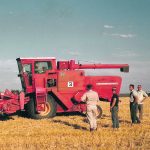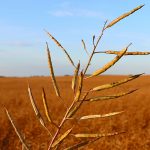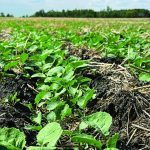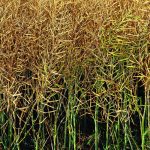SASKATOON — Global flax production problems are raising prices in the European market but not yet in Canada. Oil World estimates global production at 2.94 million tonnes, a 21 percent reduction from the previous year. “Deteriorating profit margins induced farmers not only in Canada but also in Russia and Kazakhstan to shift to more lucrative […] Read more
 Crop Management
Crop Management

Study shows Sask. growers sequester more carbon than others
REGINA — A study analyzing the carbon footprint of five key crops found Saskatchewan’s emissions are far lower than other leading producers. The Global Institute for Food Security released the results of its two-part study on canola, wheat, durum, field peas and lentils last week. The study was carried out with the provincial government. Olufunke […] Read more

Malt keeps the wheels turning
NEW NORWAY, Alta. — Low prices and a busy off-farm job convinced Dean Durand to sit down with his parents in 2005 and question why they were still farming. “Canola was priced at $6 a bushel and barley was $2 and it didn’t make any sense. It was a tough one. We sat down at […] Read more

Producers urged to use grain grading tools
Grain grading isn’t the exclusive purview of elevator operators and private consultants. The information necessary for producers to survey quality, short of an official grade, is publicly available, according to recent seminars hosted by Saskatchewan producer groups. Saskatchewan wheat, barley, canola and flax associations hosted officials from the Canadian Grain Commission for a crash course […] Read more

The future of high horsepower tractors
Practicality drives engine and power innovation in agriculture equipment. Companies are developing products suited for work on the farm, instead of depending on electrification. The near future will include cleaner diesel combustion engines, hydrogen and battery, and often a combination of them. There were many electric-power options of less than 100 horsepower at Agritechnica, the […] Read more

Engineers keep a close eye on the competition
Massey Ferguson engineers had a reputation for being unconventional while producing combine concepts
In part three of this four part series, we take a look at what it was like to be a combine field test engineer for Massey Ferguson back in the 1970s. Here is a compilation of recollections from various engineers who worked at MF’s Brantford plant during that time. Whenever a brand develops a new […] Read more
New UTV models from Kubota
In mid-November, Kubota announced changes to its line of UTVs with two new diesel-powered models. “The first one is the RTV-X Series,” said Justin Parrott, product manager for turf and RTV products at Kubota. “This is going to be the replacement for the previous X900 and X1120 models. And it’s really packed in a ton […] Read more

Decent yields in dry times
It might not be the drought many western Canadian growers recall when thinking back to the 2023 crop, but the canola yields they harvested despite it. There’s no question that conditions through the growing season were hard on yields, but one of the more perplexing things for me as we put together our first canola […] Read more

Canola views – photo essay
Photos submitted via X. Other stories in the 2023 Canola Yearbook: Decent yields in dry times Canola growing season in review Spraying in dry times can be tricky Flying the fields Hormone imbalance suspected for malformed racemes Incorporating resistant traits weighs on yields Production briefs Pest roundup: Canola pests kept in check by dry conditions […] Read more

Canola growing season in review
The main concern going into the 2023 canola growing season was extremely low soil moisture levels. Dry conditions during the 2022 growing season depleted soil moisture reserves across most of Western Canada. The moisture deficits were most acute in Saskatchewan and Alberta, which were rated as very dry and contained nearly zero moisture below six […] Read more

 Crop Management
Crop Management


